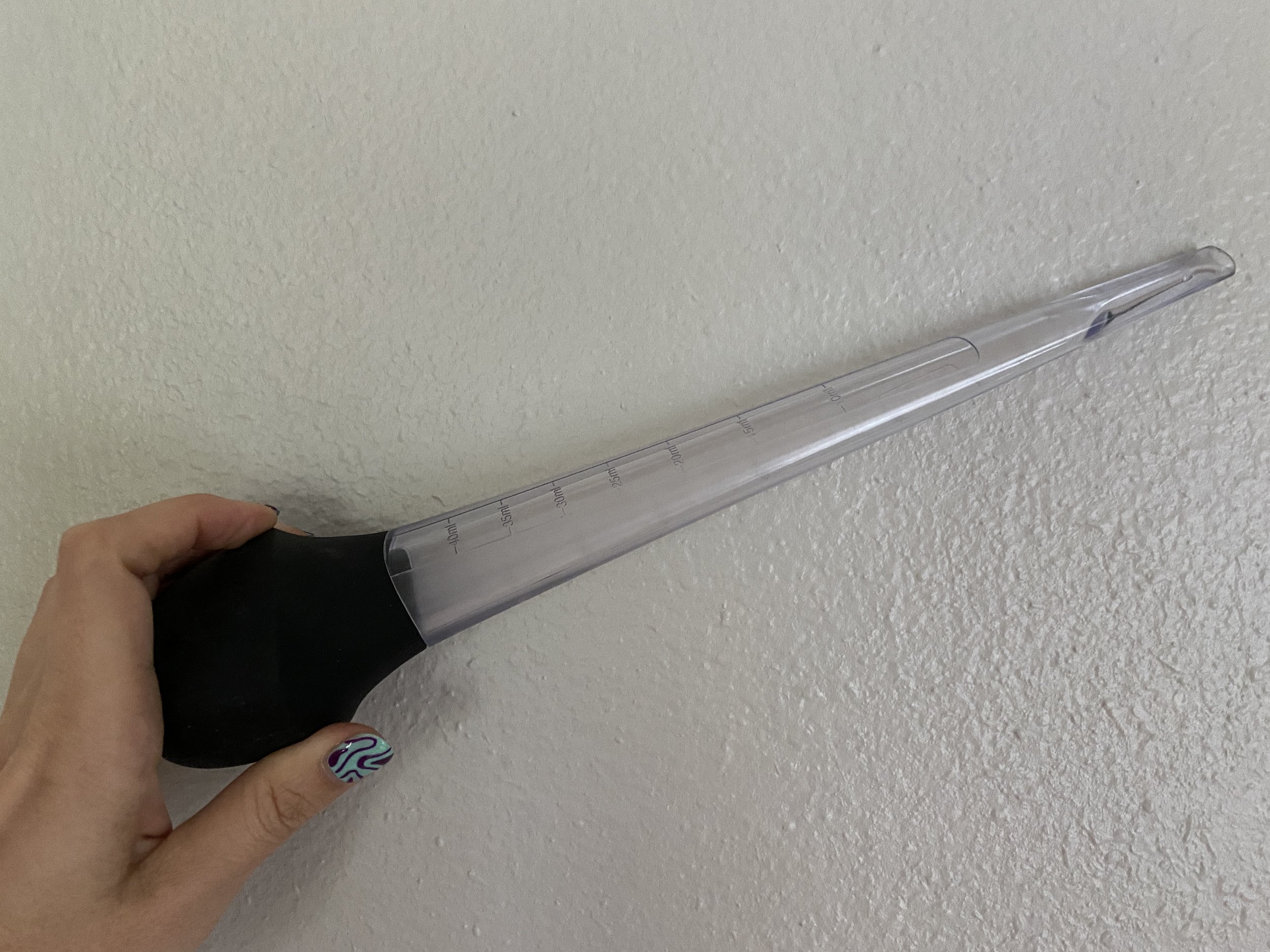With tests passed and donor sperm in a freezer somewhere, it was time to actually try to get pregnant. Because I seemingly did not have any infertility issues, we started with IUIs.
Note: This is not actually what they use for IUIs.
The explainer:
IUI (intrauterine insemination) is kind of like a fancier, more exact version of a turkey baster. The specific IUI procedure involves the doctor running a catheter into your uterus when you ovulate and injecting sperm in (for IUIs, semen is “washed” to get rid of the other stuff in semen and keep only the sperm).
The advantage of IUIs is that they are much cheaper and less invasive than IVF (about $2,000 per try, including sperm purchase). The downside is they are much less effective — success rates depend on age and fertility but usually fall in the 10-20% range.
The entire IUI process is easy and relatively painless. You’ll have an ultrasound on the an early day of your period (day 2, 3, or 4) to make sure your uterus/ovaries don’t have any cysts and look okay. You take medication (in my case it was Femara — didn’t really have any side effects on it) for five days to encourage your ovaries to produce more than one egg. You’ll have another ultrasound around day 10 to see how things are developing. Because I didn’t have any problems ovulating, my doctor just had me do at-home ovulation tests but some people will do trigger shots to make them ovulate.
(A note on ovulation tests: these come in idiot-proof smiley face versions, which are like $36 for 10, or a two-lines version, which are $29 for 100. Being an insane person, I used the two-lines versions when I got close to ovulation and the smiley face version to confirm.)
When you get a positive ovulation test (🙂), you call the office and come in the next day for your IUI. The actual IUI procedure was totally painless for me. It takes about two minutes, feels about like getting your annual exam, and then afterwards you lie down for 10 minutes for, uh, obvious reasons.
Two weeks later, you go into a lab to get a blood draw for your pregnancy test. You’re supposed to treat these two weeks as if you’re pregnant — mentally this in-between period is a pretty harrowing time because humans can’t handle uncertainty.
The general consensus with IUIs seems to be that there are diminishing returns after your third or fourth attempt, and you should switch to IVF after that. Some clinics will let you do IUI ad infinitum which seems very suspect to me, so it’s definitely something to ask when looking for a clinic.
My experience:
Unlike my mental self, which is permanently set to “random,” I have a clockwork-exact 28-day cycle and I kept ovulating on Saturdays. This meant that instead of seeing my normal doctor, a woman, I had to go in and see whoever was on call that weekend, which was always a man, which made me feel uncomfortable. For the first IUI in particular, I had a doctor with zero bedside manner. He had to use a different kind of catheter to do the IUI but there wasn’t one in the room. While the nurse ran to get it, we just sat silently in the room with my legs splayed, making zero attempt at smalltalk. It was unimaginably awkward.
I did my first IUI in July 2021 and it was not successful. I was okay with this. Logically, I knew the chances were low, so I was a little sad, but not a big deal.
They upped my Femara dose and I did my second IUI in August and it was not successful. I was not okay with this. Apparently two IUIs was enough to make me feel like I was a failure at being fertile. I was very sad for about two days.
I did my third IUI in December. At that point, I knew that in the new year I would have new insurance that would cover IVF, even without prior IUIs. I did not have high hopes for another round of this thing that already hadn’t worked twice, but I had a vial of sperm sitting around and I was still hoping I could avoid IVF so I figured I might as well use it.
Getting to my third IUI was a shitshow. Per usual, I was going in on a Saturday and I had one of the last appointments of the day at 1:30 p.m. I went to my car to drive to the appointment and — it wouldn’t start. I freaked out and called an Uber to take me to the clinic. My Uber driver, who was not wearing a mask when Omicron was starting to rear its head, had a hacking cough I got to enjoy frequently throughout the journey, which took significantly longer because the man was apparently unable to follow directions on Google Maps. I finally got to the clinic a mere five minutes late for my appointment, they did the thing, and then I had to call an Uber home. Of course, it was the same driver.
I was feeling extremely negative about this experience and thought my IUI was cursed. My friend switched my perspective by saying, “If it works, won’t it be a hilarious story to tell your child?”
That did help, but of course, it didn’t work.
After my third round, as expected, my doctor recommended switching to IVF, and this is when shit started getting real.
By the way, at this point, I had spent about $6,000 trying to get pregnant.
Part One: The Lead-up and the Tests
Part Two: Choosing a Sperm Donor
Part Four: Getting Started with IVF and Finding a Clinic
Part Five: Insurance Hell and IVF Costs
Part Six: Egg Retrieval and Needles Galore
Part Seven: Creating Embryos and the Numbers Game
Part Eight: ~*fEEliNgS*~

